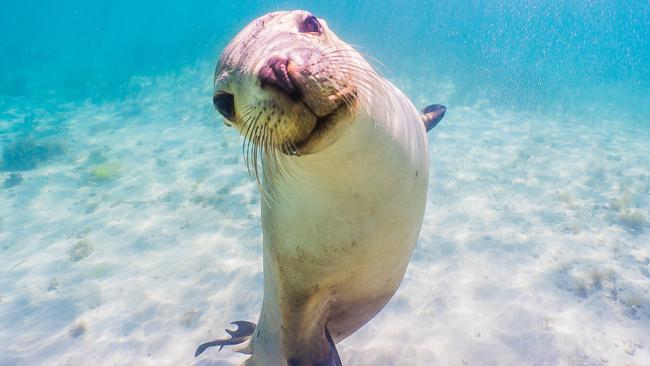Landmark Adelaide University study reveals value of SA national parks
Wineries and beaches are the stars of the tourism ads but a landmark Adelaide uni study has revealed where we can really make a lot of green.
Lifestyle
Don't miss out on the headlines from Lifestyle. Followed categories will be added to My News.
A University of Adelaide study has found national parks pump $374m into the state economy annually, as well as supporting thousands of jobs across South Australia.
The first study of its kind was commissioned by Environment Minister David Speirs to promote SA nature-based tourism.
“We have always known the environmental and social benefits that national parks bring and for the first time we now know the economic value as well,’’ he said.
Visitor numbers combined with average daily spends were used to calculate the tally.
Premier Steven Marshall said the report also reveals that parks support 1211 private sector jobs in regional communities.
“SA has always been well known for its beautiful wineries and stunning beaches, but our parks are quickly becoming the jewel in the crown of our tourism offerings,’’ he said.
The report also found that each dollar of public money spent on parks returns $10 in state earnings, and each dollar a visitor spends in a park translates to $23 for the surrounding region.
Adelaide last year became the world’s second National Park City.
The study, based on 2018-19 data to establish pre-Covid pandemic benchmarks found:

PARKS now take up 21 per cent of the state’s land.
SEVENTY-FIVE PER CENT of South Australians visited a park in 2018-19.
OF PARK visitors, 23 per cent were South Australians, 26 per cent were from overseas and 51 per cent were interstate holiday-makers.
Interstate and international activity generated 76 per cent of all visitor revenue.
SA’s expansion of areas protected has resulted in the number of national parks across the state rising from 21 to 29, and the area protected doubling from about 3.90 million hectares to just over 7.9 million hectares since 2018.
By far the biggest regional money spinner is Kangaroo Island, which the study found enjoyed a $170m benefit in 2018-19, compared to the Eyre Peninsula and Far West, $56m; the Flinders Ranges and the Outback, $50m; Yorke Peninsula and Mid North, $49m; the Limestone Coast, $37m; and the Riverland and Murraylands, $5.6m.
Three of the biggest money- spinning sites were Seal Bay on Kangaroo Island, with an economic benefit of $65.9m; Naracoorte Caves, $17.6m; and Cleland Wildlife Park, $3.66m.
The study found many parks had suffered lower visitor numbers during Covid-19 restrictions, but had rallied since the worst of the pandemic with a 64 per cent increase in visitor use since their reopening from mid-May 2020 to June 2021.
Also, interstate tourism numbers were recovering, from a pre-Covid high of 35 per cent of the visitor market to 25 per cent of the market.
There has also been an increase in people taking shorter, weekend visits to parks in the past year.




